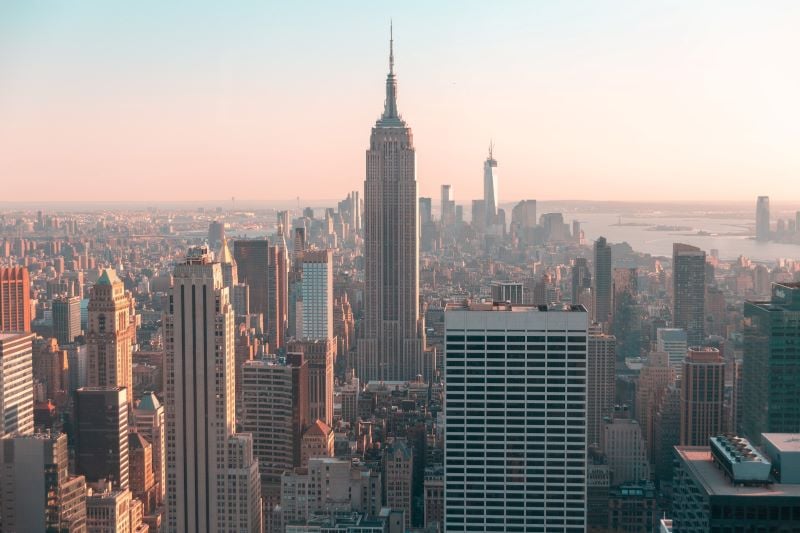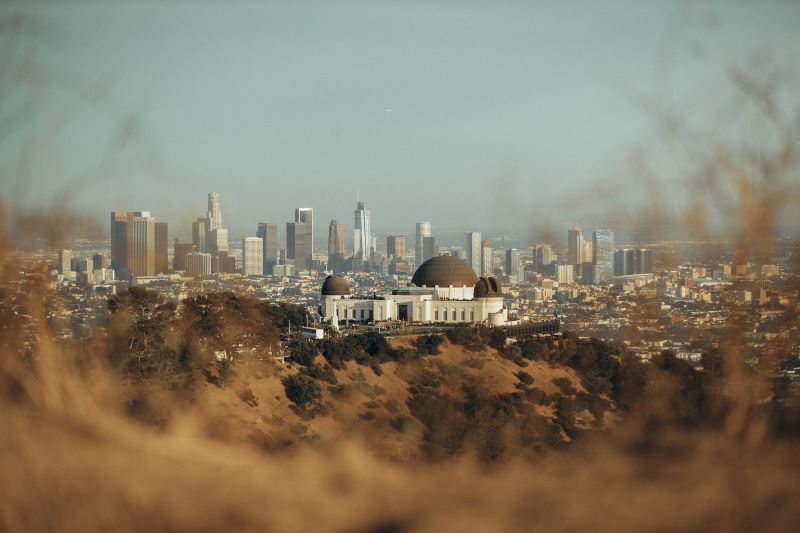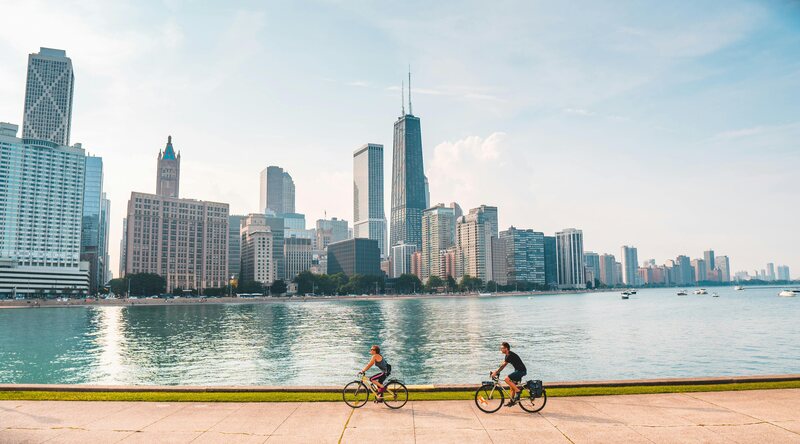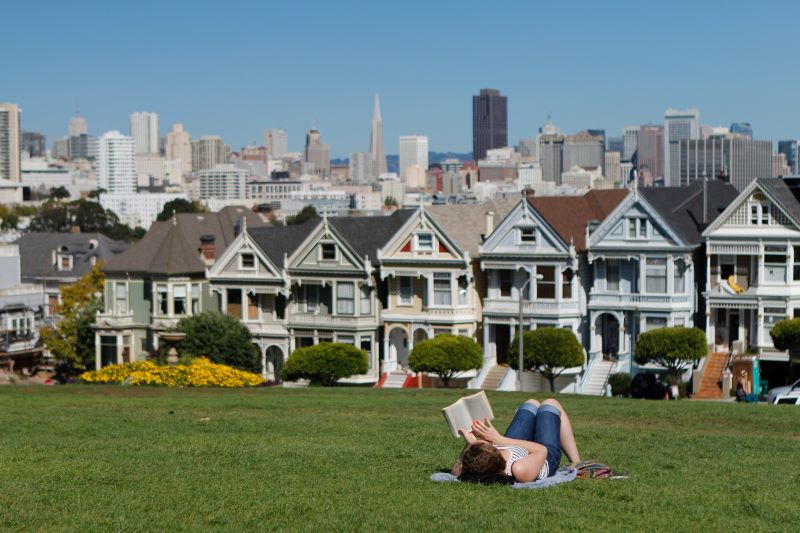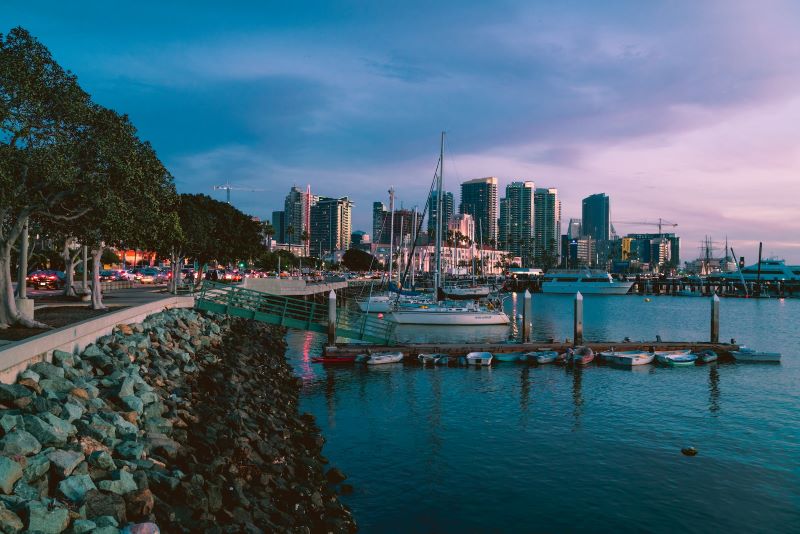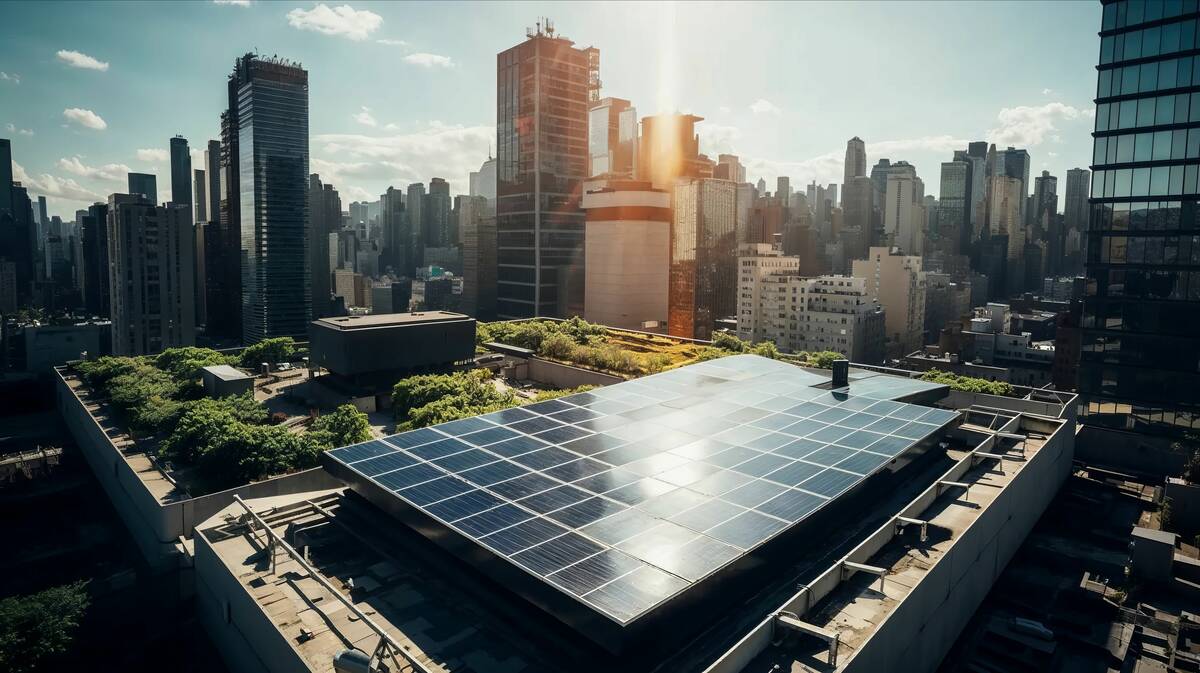
Which American cities are leading the way toward a sustainable future, and which ones are lagging behind?
To mark World Environment Day on June 5, LawnStarter ranked 2024’s Most Sustainable Cities.
We compared the 500 biggest U.S. cities based on 5 sustainability categories. We looked at the number of certified zero-energy buildings, alternative fuel stations, and greenhouse-gas emissions, among 39 total metrics.
See how your city compares below. To learn how we ranked the cities, see our methodology.
Contents
- City Rankings
- Top 5 Close Up
- Key Insights
- Ask the Experts
- Methodology
- Final Thoughts: Going Green in Your Backyard
City Rankings
See how each city fared in our ranking:
Top 5 Close Up
Check out the slideshow below for highlights on each of our top 5 most sustainable cities.
Key Insights
American cities continue to take steps toward sustainable living. 443 cities claim clean city coalitions, 69 have urban heat island mitigation programs, and 170 are members of Local Governments for Sustainability (ICLEI).
Big cities — New York (No. 1), Los Angeles (No. 2), and Chicago (No. 3) — offer the best infrastructure for green lifestyles, from climate-friendly policies to public transportation and farmers market access. However, they are also among the most polluted, with high carbon dioxide emissions, excess fuel consumption, and millions of tons of waste in landfills.
Southern cities and suburbs — like Murfreesboro, Tennessee (No. 480), Cape Coral, Florida (No. 481), and Beaumont, Texas (No. 499) — scored near the bottom, along Pharr, Texas, in last place. These regions lack sustainable policies, infrastructure, and adequate options for car-free transportation.
Ask The Experts
America needs sustainable solutions that stick. Our panel of experts weigh in and share their tips on adopting a more eco-friendly lifestyle. Read their thoughts below.
- What innovative sustainability ideas will make the most impact in the next 10-20 years?
- What are your top three tips for green living?
- Why is the U.S. so far behind other countries on sustainable transportation advancements like mass transit, including high-speed trains? What would it take to catch up?








What innovative sustainability ideas will make the most impact in the next 10-20 years?
Ideas that teach the general public that sustainable matters and it’s not all some hoax made up by scientists who want their research funded. Once we get past that, it will be the idea that we should live in “integrated” neighborhoods in which we can maintain our daily lives without having to commute long distances in single-occupancy vehicles.
What are your top three tips for green living?
- Live close enough to work and shopping that you can walk or bike.
- Avoid eating meat.
- Buy second-hand items when you can (I find this the hardest).
Why is the U.S. so far behind other countries on sustainable transportation advancements like mass transit, including high-speed trains? What would it take to catch up?
U.S. cities have been designed with the car in mind. We would need wholesale redesign of cities like Los Angeles and Houston to make mass transit effective. With political will, we could do it, but that requires a true appreciation for the magnitude of the calamity that awaits us if we don’t.

What innovative sustainability ideas will make the most impact in the next 10-20 years?
- Investments in carbon capture and storage, green infrastructure, renewable energy technology, energy storage technologies, electric vehicle deployment infrastructure mass transit upgrades, energy-efficient buildings, and land conservancy, and habitat restoration
- Appropriating funds to advancing science and research, as well as programs aimed at informing the public on environmental concerns and sustainable practices
- Energy-efficiency technologies will make a huge impact on global emissions. By transitioning to clean energy (like wind, solar, etc.) we can reduce industry and household carbon footprints substantially. As energy-efficiency technology continues to gain popularity, there is incentive to continuously improve efficiency, which in turn makes these technologies more affordable and accessible globally.
- Reforming environmental policy and ensuring equitable access to the proposed sustainable development.
What are your top three tips for green living?
- Prioritize sustainability over convenience. This can be done in many ways in your day-to-day life. Purchase and use consumable goods thoughtfully to reduce waste, reduce energy consumption in your home, limit personal vehicle use where possible, and, when upgrading appliances or vehicles, make energy efficiency a priority.
- Support businesses that are prioritizing the environment. Do your research on the companies you choose to support via purchases and choose those that are being managed responsibly. Businesses are partially consumer-driven, when consumers demand sustainability, more industry is likely to meet those demands.
- Find a way to connect with the natural environment. Whether this be through hiking, gardening, visiting farms, etc., being proactive about engaging with the natural world can help make green living easier. When you are enjoying the natural world, you’re more likely to want to preserve it and make responsible earth-friendly decisions.
Why is the U.S. so far behind other countries on sustainable transportation advancements like mass transit, including high-speed trains? What would it take to catch up?
Advancements to sustainable transportation in the U.S. is so far behind other countries due to its high costs, lack of investments, and public awareness. Personal vehicles in the U.S. are both a cultural choice and a much-needed asset because of minimal mass transit nationwide! Much of the focus for sustainable transportation has been on improving personal vehicles (via hybrid and electric cars availability and infrastructure), but there is still much to be done for many consumers to buy in.
The way most cities are laid out do not allow for mass transit, and the shear expanse of the country provides challenges that other countries with well-developed mass transit have not had to deal with. To catch up, national collaboration is essential in making cross-country and cross-city travel easier.

What innovative sustainability ideas will make the most impact in the next 10-20 years?
Flexible loads: With smarter appliances, such as electric vehicles, water heaters, air conditioners, and refrigerators, it will be easier to manage the power grid to provide more economical and reliable energy. At UC San Diego, we are building a large testbed for the communications backbone for the future power grid.
Heat-pump technology for water heating and space heating: Heat pumps allow heating with electricity rather than fossil fuels, and their efficiency is roughly a factor of three times the efficiency of traditional electric resistance heating.
What are your top three tips for green living?
- Dense urban living: Living in apartments/condos in dense urban areas dramatically reduces energy use for transportation and space heating/cooling. A condo typically has one or two outside walls that heat up the living space versus six for a single family home. So you get a factor of five or so reduction in cooling needs. Dense urban cores also are more walkable reducing vehicle mileage and improving health.
- Induction cooktops: Induction cooking is more efficient, faster, and safer compared to standard electric cooktops.
- Behavior: Combine car trips and online orders. Turn the AC off when you are not home. Eat leftovers.
Why is the U.S. so far behind other countries on sustainable transportation advancements like mass transit, including high-speed trains? What would it take to catch up?
Low density of living and strong individuality: Low density of living dramatically increases vehicle miles traveled. Large streets, parking lots, single-family homes cause everything to be spread out, making distances to central train stations too large to be attractive to commuters. Americans like to be in control of their schedules and have a fast-paced lifestyle, which is inconsistent with the fixed schedules and slower pace of mass transit.
For those reasons, high-speed trains will never be feasible in the U.S. COVID sent mass transit into a death spiral in all but the densest urban areas such as New York City. The only viable solution in the U.S. are electric cars and scooters, but the former will require a massive investment into the electric grid as car travel is much less efficient than train or bus travel.

What innovative sustainability ideas will make the most impact in the next 10-20 years?
- The idea that small families are desirable, and that all women, everywhere, have the right to exercise freedom over their own reproduction.
- The idea that green energy is cheaper in the long run than fossil energy, and has multiple benefits that go beyond reducing the threat of climate catastrophe.
- The idea that regulations and taxes enlarge our freedoms and make our lives better.
What are your top three tips for green living?
- Walk or bicycle, rather than drive, whenever possible.
- Avoid buying crap wrapped in plastic.
- In winter, a room at 60 degrees F plus a sweater is more comfortable and healthier than a room at 65 or 70 degrees F.
Why is the U.S. so far behind other countries on sustainable transportation advancements like mass transit, including high-speed trains? What would it take to catch up?
Because a while back, largely under Reagan, a large segment of the the U.S. public bought into the notion that government was bad, regulations are bad, taxes are bad. We lost 40 years because of this. The folly of those notions has to become apparent to people before we can catch up.

What innovative sustainability ideas will make the most impact in the next 10-20 years?
Modernizing our electric transmission infrastructure, coupled with renewable power generation (wind and solar) and storage, will have the biggest positive impact on our environment in the near future.
I am also hopeful of breakthroughs in technologies, such as nuclear fusion and renewable hydrogen production, which can have a significant impact on the energy landscape.
What are your top three tips for green living?
- Food choices: A vegetarian diet or even cutting down on meat consumption can have a big impact on the environment.
- Conserve water: This may not seem like a problem right now, but it could be a challenge in the future.
- Energy-efficiency: This should be the proposition; everybody should follow everywhere.
Why is the U.S. so far behind other countries on sustainable transportation advancements like mass transit, including high-speed trains? What would it take to catch up?
I don’t think the U.S. should strive to be like other countries in developing sustainable transportation infrastructure. We should look for solutions that are geared toward our specific problems.
That said, we should still look into developing high-speed trains between population centers on the East Coast as well as the West Coast. This may not be the optimal mass-transit solution for the sparsely populated middle part of the county. A self-driving fuel-cell/electric bus may be a better and sustainable mass-transit solution here.

What innovative sustainability ideas will make the most impact in the next 10-20 years?
We should promote the circular economy to largely reduce wastes, enhance recycling (i.e. zero waste), and save energy and resources.
Cities, rural communities, and companies should have a designated target of zero carbon emissions in the not-too-distant future, say 2050, by regional-specific portfolio, including increasing renewable-energy generation and use, increasing energy-use efficiency, reducing wastes, controlling vehicle uses, and/or enhancing best management practices in land uses, etc.
What are your top three tips for green living?
1. Everyone should change their behaviors to reduce food and water waste in daily life.
2. Governments and communities should invest in recycling facilities to enable residents to do better at recycling (most communities in the U.S. still do not have the typical three-bin — waste, paper, and can — recycling systems).
3. Residents should be encouraged to adopt rain gardens, green or solar roofs, and geothermal systems; incentives (e.g., additional property tax) may go with house sizes.
Why is the U.S. so far behind other countries on sustainable transportation advancements like mass transit, including high-speed trains? What would it take to catch up?
Large-scale new infrastructure development in the U.S. has been difficult. The reason(s) is certainly different from that in poor developing countries. I guess this might be related to the lack of an appropriate benefit/cost assessment approach, especially the benefit/cost share mechanism among multiple stakeholders.
This might also be related to the decision making procedures, which need to better balance human and environmental requirements, coordinate priorities from the various societies, and more effectively resolve conflicts among stakeholders.
Overall, actions are needed today rather than never-ending wait-and-see.

What innovative sustainability ideas will make the most impact in the next 10-20 years? Developing the circular economy as described here.
What are your top three tips for green living?
My top 12 are in my latest book, “Zero Waste in the Last Best Place.”
Why is the U.S. so far behind other countries on sustainable transportation advancements like mass transit, including high-speed trains? What would it take to catch up?
In the ’70s, Nixon established the oil standard. Messing around with this could cause substantial harm to the U.S. dollar (USD), since it’s basically illegal to sell oil in any currency other than the USD. This is primarily why Sadam Hussein was assassinated and Iraq was invaded. It is going to take a very special techno-financial innovator to break this spell.
Methodology
First, we determined the factors (metrics) that are most relevant to rank the Most Sustainable Cities. We then assigned a weight to each factor based on its importance and grouped those factors into 5 categories: Policy, Sustainable Development, Pollution, Transportation, and Food Production. The categories, factors, and their weights are listed in the table below.
For each of the 500 biggest U.S. cities, we then gathered data on each factor from the sources listed below the table.
Finally, we calculated scores (out of 100 points) for each city to determine its rank in each factor, each category, and overall. A city’s Overall Score is the average of its scores across all factors and categories. The highest Overall Score ranked “Best” (No. 1) and the lowest “Worst” (No. 500).
Note: The “Worst” among individual factors may not be No. 500 due to ties.
Sources: AARP, American Council for an Energy-Efficient Economy, DSIRE, Earth911, Electricity Local, Global Green, Google Ads, A Greener World, Green Restaurant Association, Lime, Local Governments for Sustainability, New Buildings Institute, OpenTable, Other LawnStarter Studies, The Real Yellow Pages, Redfin, Roof Gnome, Spin, Texas A&M Transportation Institute, TheThriftShopper.com, Trust for Public Land, U.S. Census Bureau, U.S. Department of Agriculture, U.S. Department of Energy, U.S. Environmental Protection Agency, Veo, Walk Score, Yelp
Final Thoughts: Going Green in Your Backyard
In March 2024, the National Atmospheric and Oceanic Administration reported a record-high increase in atmospheric carbon dioxide levels, thanks to deforestation, fossil fuels, and El Niño. However, the world is taking strides toward sustainability: Renewable energy sourced 30% of global electricity in 2023.
By 2050, the U.N. predicts that two-thirds of people will live in an urban area, which is why many cities are focusing on sustainable policies and eco-conscious development.
Parts of the U.S. are attempting to keep up with global climate goals — like California with numerous statewide climate policies, Seattle (No. 8) running on carbon-free hydroelectric power, and Washington (No. 20) where new vehicles will need to be zero emission by 2035 in order to register with the city.
From urban gardening to eating local to tiny house living, many Americans are connecting with their local environment and pursuing more sustainable choices on an individual level.
Lawn care is even going green, with hundreds of local governments banning or restricting gas-powered equipment like mowers, blowers, and trimmers. Whether your yard is big or small, you can improve sustainability in your own landscape with help from our guides below.
- Lower your water bills with native plants and xeriscaping.
- Don’t pick up your grass clippings after mowing, aka grasscycling.
- Optimize your lawn and landscape watering practices.
- Switch to an eco-friendly grass alternative.
- Use organic lawn fertilizer.
- Start composting your leftover scraps.
- Learn how to grow a sustainable lawn in the desert.
- Opt for eco-friendly lawn care equipment:
Hire a local LawnStarter crew to xeriscape your lawn and landscape.
Media Resources
Quotes from LawnStarter Editor-in-Chief Jeff Herman
- 25 California cities sprouted into our top 100 most sustainable cities.
- Los Angeles (No. 2) enjoys the best access to electric vehicle charging stations and alternative fuel stations.
- California cities Stockton (No. 47) and San Leandro (No. 57) boast the lowest greenhouse gas emissions.
- San Diego (No. 5) is home to the highest number of certified zero-energy buildings.
- Apart from San Francisco (No. 4), East Coast cities dominated the top of the Food Production ranking. Cities like Boston (No. 7) and Baltimore (No. 12) feast with top access to farmers markets, local food hubs, and on-farm markets.
- Of our 10 least populated cities, Bethlehem, Pennsylvania (No. 85), and Iowa City, Iowa (No. 87), stood out among the 100 most sustainable cities, as ICLEI members with low excess fuel consumption, diverse transit options, and park access.
- Maryland produced the most financial incentives supporting renewables and energy efficiency.
- Iowa cities — such as Sioux City (No. 194), Des Moines (No. 146), and Davenport (No. 277) — are among the 10 least polluted cities, with some of the lowest excess fuel consumption per auto commuter, fewer CO2 emissions, and high Environment Scores from AARP’s Livability Index.
- Chicago (No. 3) claims the most policies supporting renewables and energy efficiency, followed by 4 tied Minnesota cities — Minneapolis (No. 15), Bloomington (No. 91), Plymouth (No. 117), and Brooklyn Park (No. 169).
- Of the 30 most populous cities, Oklahoma City, Oklahoma (No. 290), El Paso, Texas (No. 289), and Memphis, Tennessee (No. 355), landed toward the less sustainable end of our ranking.
- The largest cities without a clean city coalition are Texas cities El Paso (No. 289), Corpus Christi (No. 452), and Tucson, Arizona (No. 93).
- High-resolution images of cities
- 2022’s Most Sustainable Cities ranking results
- 2023’s Most Sustainable Cities ranking results
Main Photo Credit: Infini Craft / Adobe Stock / License
